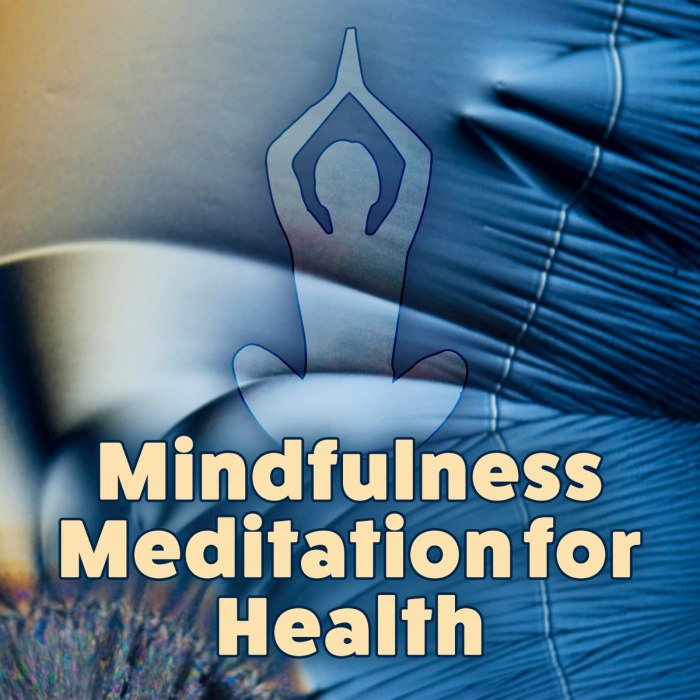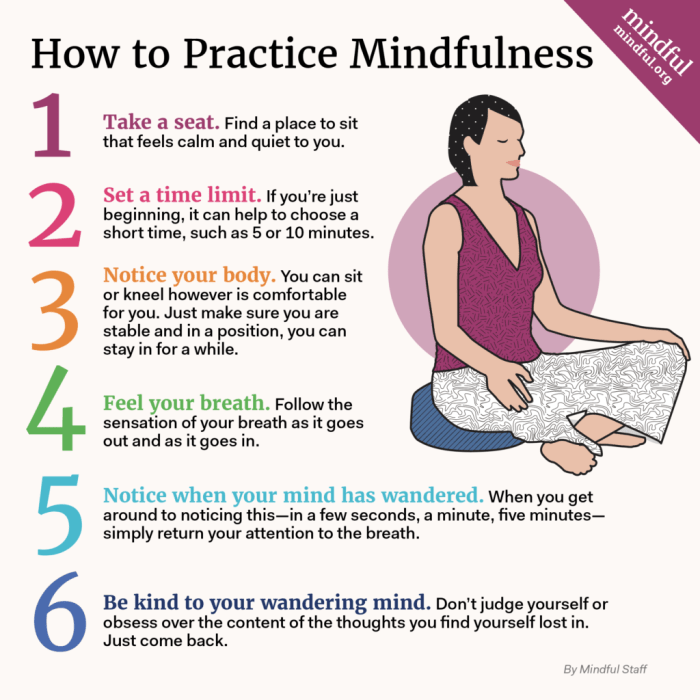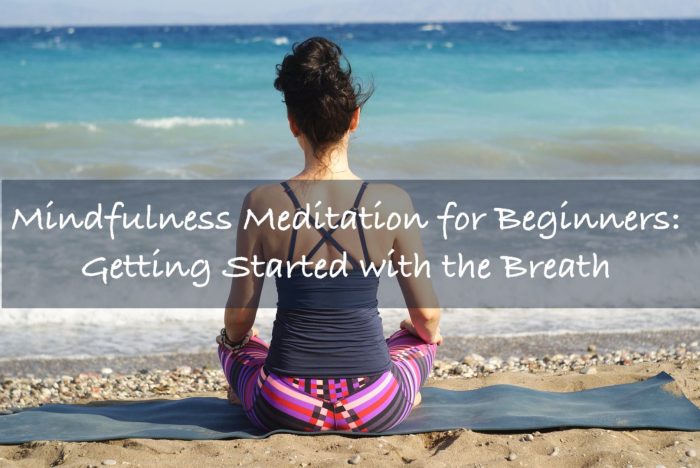Embark on a journey into mindfulness meditation for beginners, uncovering its transformative power and practical techniques that can be easily incorporated into daily life.
Delve deeper into the essence of mindfulness meditation and how it can benefit individuals seeking inner peace and mental clarity.
Understanding Mindfulness Meditation

Source: magicbuddy.ai
Mindfulness meditation is a practice that involves focusing your mind on the present moment, acknowledging and accepting your thoughts, feelings, and bodily sensations without judgment. It helps cultivate awareness, attention, and compassion towards oneself and others.
Benefits of Mindfulness Meditation for Beginners
- Reduces stress and anxiety levels.
- Improves focus, concentration, and memory.
- Promotes emotional well-being and resilience.
- Enhances self-awareness and empathy.
Basic Principles of Mindfulness Meditation
- Focus on the present moment.
- Observe thoughts and emotions without attachment.
- Cultivate a non-judgmental attitude towards experiences.
- Practice self-compassion and kindness.
How Mindfulness Meditation Differs from Other Forms of Meditation
Mindfulness meditation is unique in its emphasis on being fully present in the moment and accepting things as they are, while other forms of meditation may involve concentration on a single point or visualization. Mindfulness meditation does not aim to empty the mind but rather to observe thoughts and sensations without getting caught up in them.
Getting Started with Mindfulness Meditation

Source: mzstatic.com
Starting your mindfulness meditation practice as a beginner can feel overwhelming, but with the right approach, you can ease into it effectively.
Ideal Environment for Mindfulness Meditation
Creating a peaceful environment is essential for successful mindfulness meditation. Choose a quiet space where you won’t be disturbed, and consider adding elements like soft lighting, cushions, or soothing music to enhance the atmosphere.
Importance of Posture and Breathing Techniques
- Posture: Sit comfortably with your back straight, shoulders relaxed, and hands resting gently on your lap or knees. This posture promotes alertness and prevents discomfort during meditation.
- Breathing Techniques: Focus on your breath as you inhale and exhale slowly and deeply. Pay attention to the sensations of each breath, using it as an anchor to keep your mind present in the moment.
Common Challenges and How to Overcome Them
- Restless Mind: It’s normal for your mind to wander during meditation. When this happens, gently redirect your focus back to your breath without judgment.
- Impatience: Remember that mindfulness meditation is a practice that takes time to develop. Be patient with yourself and trust the process.
- Physical Discomfort: If you experience discomfort in your posture, adjust as needed to find a position that is both comfortable and supportive for your practice.
Techniques and Practices

Source: mindful.org
When it comes to mindfulness meditation, there are various techniques and practices that can be beneficial for beginners. These techniques help in cultivating awareness, reducing stress, and enhancing overall well-being.
Guided Meditations
Guided meditations are highly recommended for beginners as they provide a structured approach to meditation. These sessions are led by experienced practitioners or through pre-recorded audio guides. The guidance helps in focusing the mind, staying present, and understanding the basics of mindfulness meditation.
- Follow along with a guided meditation to learn the foundational principles of mindfulness.
- Choose a comfortable and quiet space to minimize distractions during the practice.
- Set aside a specific time each day to establish a routine and make meditation a habit.
Focus and Presence
Staying focused and present during meditation sessions can be challenging, especially for beginners. Here are some tips to help you maintain your concentration:
Acknowledge any distracting thoughts or emotions without judgment, then gently bring your focus back to your breath or a chosen anchor point.
- Practice deep breathing exercises to center yourself and calm the mind.
- Engage all your senses to stay grounded in the present moment.
- Acknowledge any discomfort or restlessness and allow yourself to let go of them.
Incorporating Mindfulness into Daily Activities
Mindfulness is not limited to formal meditation sessions; it can be integrated into your daily activities. Here’s how beginners can incorporate mindfulness into their routine:
- Practice mindful eating by savoring each bite and paying attention to the flavors and textures of your food.
- Take short mindfulness breaks throughout the day to check in with yourself and observe your thoughts and emotions.
- Engage in mindful movement activities like yoga or walking meditation to connect with your body and breath.
Building a Routine and Progressing

Source: mindowl.org
Building a consistent mindfulness meditation routine is essential for beginners to experience the full benefits of this practice. Consistency helps in creating a habit and allows individuals to progress in their mindfulness journey.
Sample Mindfulness Meditation Routine for Beginners
- Start with 5 minutes of meditation in the morning, focusing on your breath and bodily sensations.
- Gradually increase the duration to 10 minutes after a week, adding a body scan to your practice.
- Incorporate mindful walking for 5 minutes in the afternoon, paying attention to each step.
- End your day with a 5-minute gratitude meditation, reflecting on positive moments of the day.
The Role of Consistency in Mindfulness Meditation
Consistency is key to reaping the benefits of mindfulness meditation. By practicing regularly, individuals train their minds to be present and cultivate a sense of inner peace. Consistent practice enhances focus, reduces stress, and promotes overall well-being.
Tracking Progress and Staying Motivated
- Maintain a meditation journal to track your daily practice, noting any improvements or challenges.
- Celebrate small victories, such as increased focus or reduced anxiety, to stay motivated on your mindfulness journey.
- Join a meditation group or online community to connect with like-minded individuals and gain support.
Gradually Increasing Duration and Intensity
- Slowly increase meditation duration by 1-2 minutes every week to avoid overwhelm and build endurance.
- Introduce new techniques, such as loving-kindness meditation or body scan, to deepen your practice and challenge yourself.
- Listen to your body and mind, adjusting the intensity of your practice based on your comfort level and needs.
Last Point

Source: thejoywithin.org
In conclusion, mindfulness meditation offers a gateway to a calmer mind and a more present life, fostering a sense of well-being and balance for beginners on their mindfulness journey.